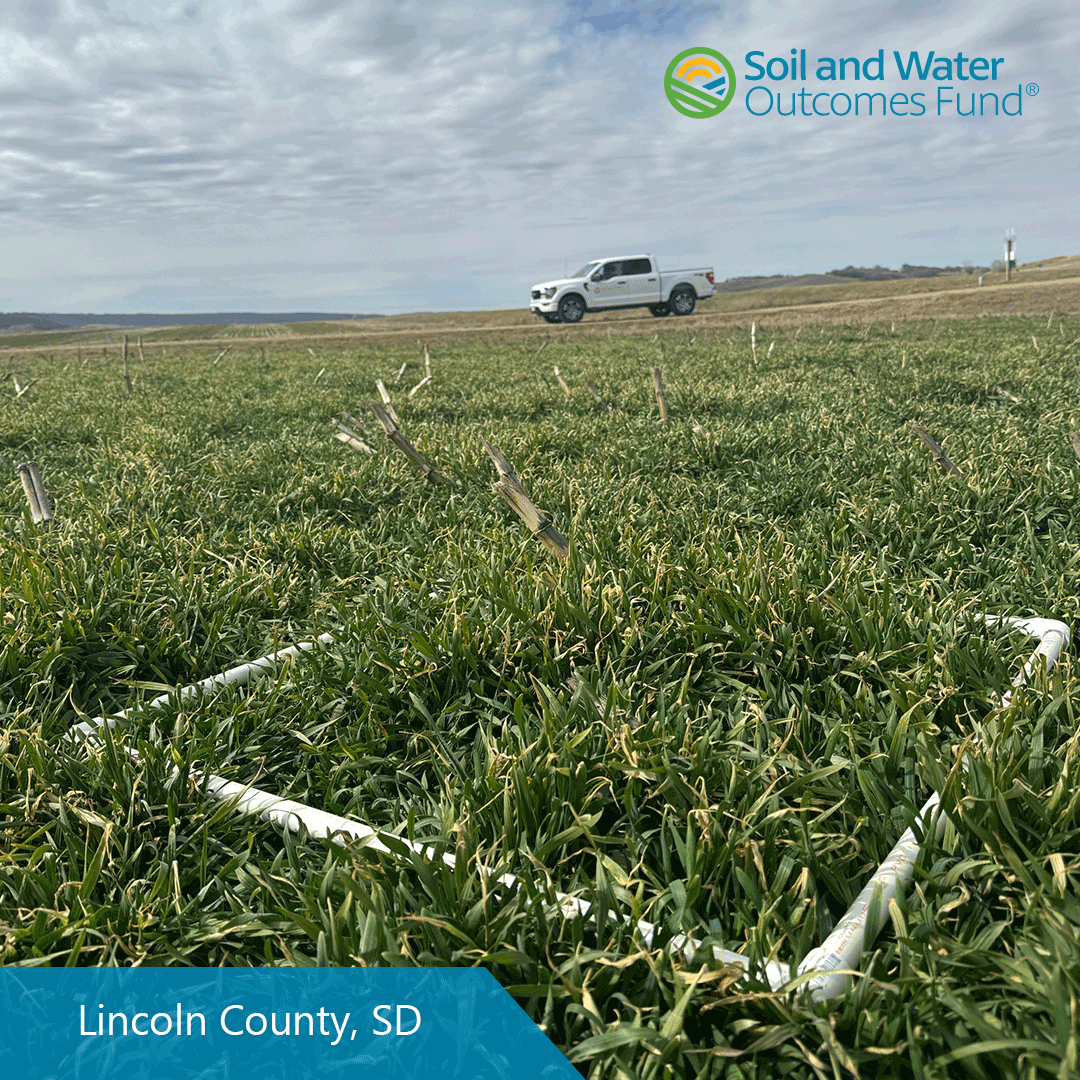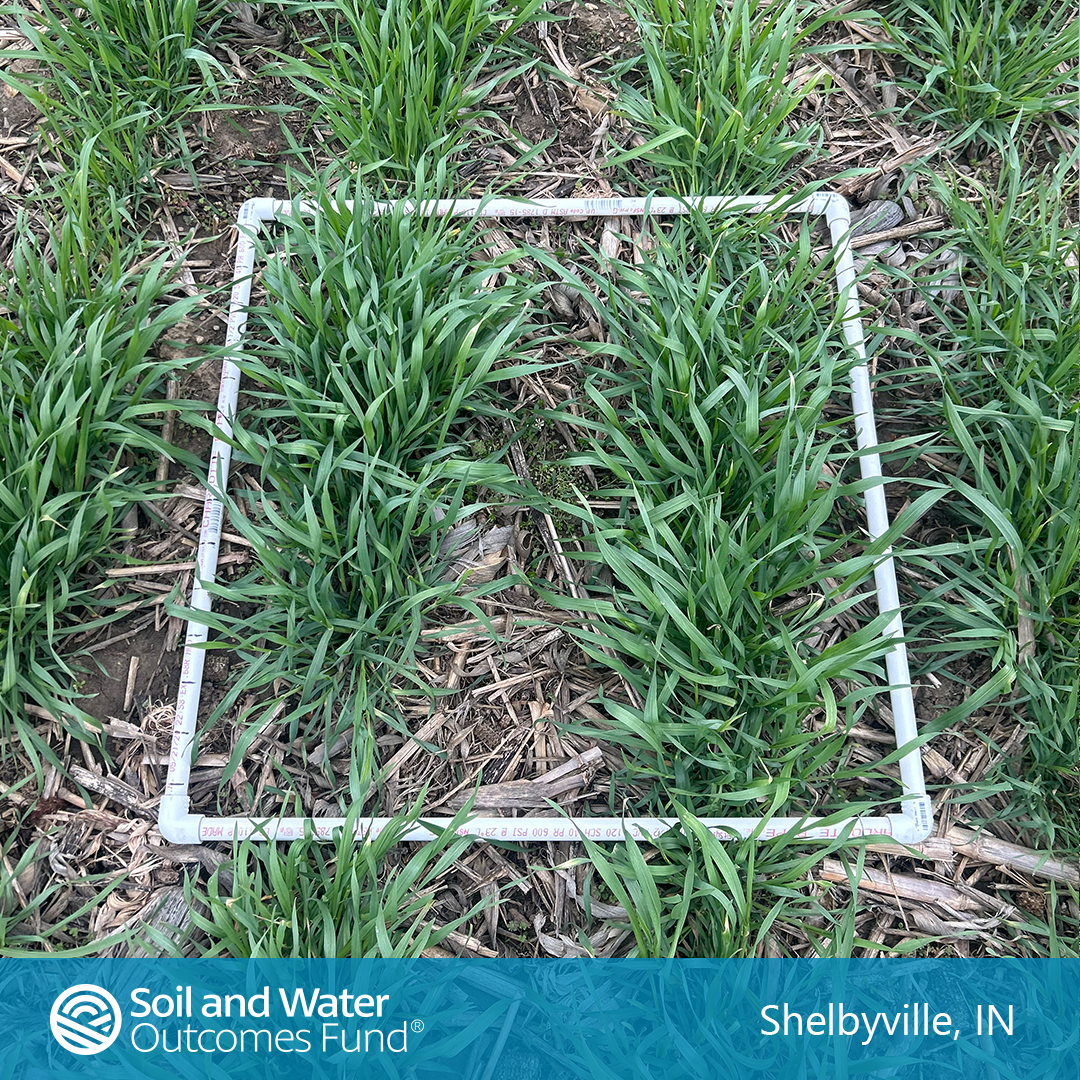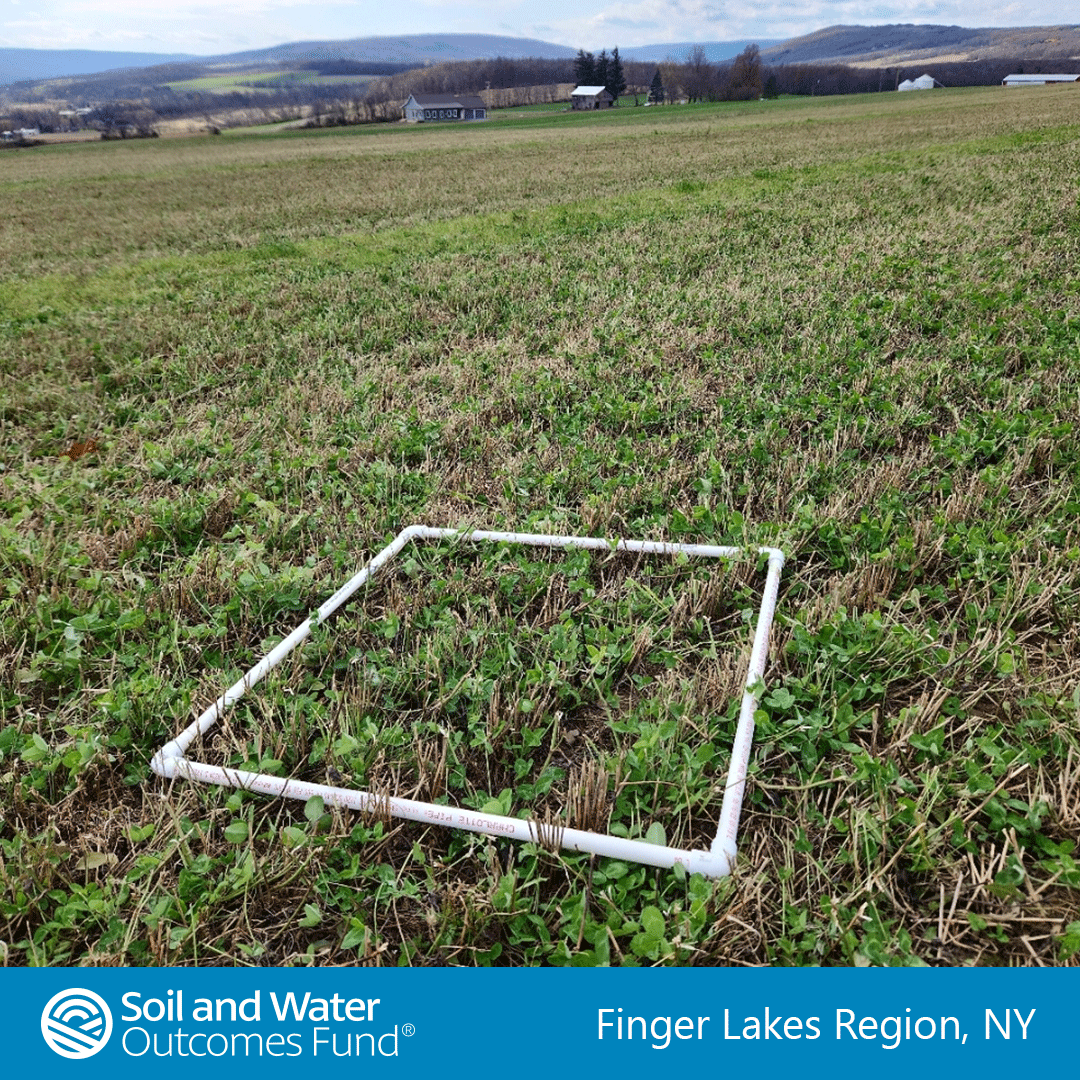12 Cover Crops to Boost Farm Productivity and Sustainability
By Charlie Ebbesmeyer, SWOF Field Program Representative: NE and Southern Missouri
When it comes to improving soil health, reducing erosion, and cutting costs, cover crops offer farmers a range of benefits tailored to meet their operational needs. Below, we’ll explore twelve versatile cover crop options, each with its unique advantages, to help you determine which is the best fit for your needs. All twelve of these cover crop species are currently being grown by farmers enrolled in the Soil and Water Outcomes Fund (SWOF), demonstrating their benefits and adaptability.
Lush cereal rye grows in this SWOF-enrolled field.
1. Cereal Rye
Cereal rye is a farmer favorite for good reason. This hardy winter cover crop grows quickly in cooler weather. Cereal rye has the ability to germinate in soil temperatures as low as 34 degrees! It’s also highly effective at suppressing weeds, thanks to its allelopathic properties and the shade it provides to the soil surface, which minimizes new weed germination. Its strong root system and large above-ground biomass tonnage help reduce erosion and soil compaction, making it an ideal choice for improving soil structure and preparing fields for spring planting. Cereal rye does well in most soil types, especially in hard-growing sandy or acidic soils.
2. Oats
Oats are a cool-season annual grass that thrive in fall planting, especially in moist conditions. They grow biomass rapidly, reducing erosion and adding organic matter to the soil as they decompose. In colder climates, oats naturally winter-kill, simplifying spring management. This makes it a great option for those wanting to start adding a fall cover crop before their spring corn crop. Due to its rapid fall growth, oats are a great option for fall feed in livestock operations as oats also provide high-quality grazing forage.
Beautiful forage on these turnips in western MN.
3. Turnips
Turnips offer dual benefits as a forage crop and a soil health booster. Their deep taproots can help break the upper-level soil compaction while capturing excess nitrogen to reduce runoff. Turnips are particularly beneficial for livestock grazing and are a valuable addition to a diversified cover crop plan. Plant in late summer or early fall for best results, since this cover crop will kill-out in harsh winter conditions.
4. Winter Wheat
Winter wheat is a cash crop or a reliable cover crop for colder climates. It provides excellent erosion control, stabilizes soil, and suppresses weeds throughout the winter months. Wheat has a higher protein value for grazing. While it still produces large amounts of biomass, this species, when planted as a cover crop, is easy to manage in the spring, making it a farmer favorite to seed before a corn cash crop is planted. Its versatility allows it to be used for forage or harvested as grain in the spring, offering flexibility for farmers.
Triticale grows after no-till corn central Indiana.
5. Tillage Radish
Tillage radishes are known for their deep-growing taproots that break up compacted soil layers, improving water infiltration. They also capture excess nitrogen from the soil, preventing nutrient loss during winter rains or snowmelt. Radishes can also produce significant leaf material for early fall grazing. Plant in the late summer or early fall as these brassicas will also winterkill and decompose quickly, leaving the soil ready for spring planting. This brassica can be seeded alone or with other cover crop species to compound the soil-saving effects of cover crops on the farm.
6. Triticale
Triticale, a hybrid of wheat and rye, combines the strengths of both parent crops. It grows quickly—even in low soil temperatures—stabilizes soil and provides high-quality forage for livestock all winter and into the early spring months. Its resilience and adaptability make it a dependable choice for various farming systems. Like its parent crops—winter wheat and cereal rye—this cover crop will over winter, providing soil surface biomass cover as well as soil root structure to reduce soil and nutrient runoff and leaching.
Barley covers this field in northeast North Dakota.
7. Crimson Clover
Crimson clover is a nitrogen-fixing legume that naturally enhances soil fertility and gives the succeeding cash crop a solid start. Its vibrant flowers attract pollinators, and its strong root system helps reduce soil compaction. Additionally, crimson clover has high biomass growth, making it both a great weed suppressant and great food for livestock. It’s a versatile cover crop that can be planted in spring, early summer, or fall, and will not winter-kill, providing soil protection during fallow crop months. Crimson Clover is a great option for those looking to plant a cover crop before corn, while still being able to easily manage the biomass in the springtime.
8. Barley
Barley is a fast-growing cover crop that excels in controlling erosion and building organic matter in the soil. It can be grown farther north than any other cereal grain due to its short growing period. Its drought tolerance makes it an excellent choice for areas with limited rainfall, and it’s often used in rotations to fortify soil health. It also offers high quality forage.
Red clover blankets this New York enrolled field.
9. Red Clover
Red clover is another nitrogen-fixing legume that provides substantial benefits to the soil. It improves soil structure, supports beneficial insects, and can be used as forage for livestock. Red clover is adapted to many soil types. It is dependable, low-cost, and its adaptability makes it a popular choice to interseed with small grains. It is winter hearty, so the many benefits of this cover crop will remain with the field throughout the fall, winter, and spring, until the next cash crop is planted.
10. Annual Ryegrass
Annual ryegrass thrives in a variety of conditions, making it a versatile and reliable cover crop. While its above-ground biomass is far less than rye or triticale, its extensive fibrous root system helps prevent erosion and fights soil compaction. It’s particularly effective in renewing and stabilizing soil for the next growing season.
Hairy vetch works to rejuvenate this New York field.
11. Hairy Vetch
Hairy vetch is a nitrogen-fixing powerhouse that grows slowly in the fall while continuing root development over winter. Its thick growth habit suppresses springtime weeds, and it’s often paired with grasses to enhance soil fertility and structure. When vetch is at full bloom, it terminates well with roller crimping. A great legume for colder climates!
12. Rapeseed
Rapeseed is a brassica crop with multiple benefits. It reduces soil compaction, suppresses soilborne pests, and improves water infiltration. Additionally, rapeseed contributes organic matter to the soil, enriching its overall quality and resilience. This cover crop is often paired with other brassicas or grass cover crops to enhance the overall benefit to the soil.
Choosing the Right Cover Crop for Your Farm
Selecting the best cover crop depends on your operation’s specific needs, such as soil type, climate, and operational goals. Whether you’re focused on erosion control, nitrogen fixation, forage production, or reducing compaction, there’s a cover crop that fits your plan. Additionally, many conservation programs, like the Soil and Water Outcomes Fund (SWOF), help farmers maximize the benefits of transitioning to more sustainable practices. Farmers participating in our program are earning an average of $33/acre this year. With financial support and technical guidance, making the shift can be an economically viable choice.
As you begin, remember that you have a supportive partner with SWOF. Our field program team is here as a resource as you take this step toward cutting costs, enhancing soil health, and improving your environmental stewardship. To learn more about adopting cover crops to enroll with the Soil and Water Outcomes Fund, contact us today!
Charlie Ebbesmeyer
Field Program Rep.
As our field program representative for most of Missouri, Charlie works with farmers to implement conservation practices on their farming operations. He also provides support to referral partners. Charlie is a Missouri native and was raised on his family’s farm in Fayette. He attended the University of Missouri—Columbia and graduated in 2019 with a Bachelor of Science in Agronomy. He and his wife reside in Fayette, which allows him to still help on the farm. Charlie enjoys being outdoors—whether it’s farming, hunting, photography, or hiking with his wife and dog.







